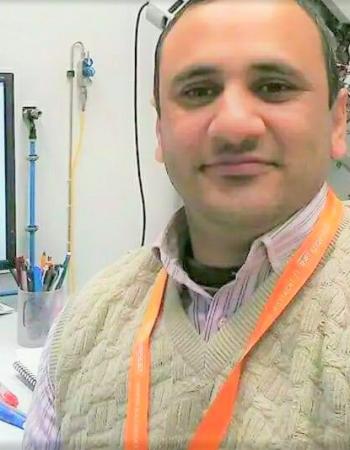Comparison of Mechanical and Microstructural Properties of as-Cast Al-Cu-Mg-Ag Alloys: Room Temperature vs. High Temperature
Unfolding the structure–property linkages between the mechanical performance and microstructural characteristics could be an attractive pathway to develop new single- and polycrystalline Al-based alloys to achieve ambitious high strength and fuel economy goals. A lot of polycrystalline as-cast Al-Cu-Mg-Ag alloy systems fabricated by conventional casting techniques have been reported to date. However, no one has reported a comparison of mechanical and microstructural properties that simultaneously incorporates the effects of both alloy chemistry and mechanical testing environments for the as-cast Al-Cu-Mg-Ag alloy systems. This preliminary prospective paper presents the examined experimental results of two alloys (denoted Alloy 1 and Alloy 2), with constant Cu content of ~3 wt.%, Cu/Mg ratios of 12.60 and 6.30, and a constant Ag of 0.65 wt.%, and correlates the synergistic comparison of mechanical properties at room and elevated temperatures. According to experimental results, the effect of the precipitation state and the mechanical properties showed strong dependence on the composition and testing environments for peak-aged, heat-treated specimens. In the room-temperature mechanical testing scenario, the higher Cu/Mg ratio alloy with Mg content of 0.23 wt.% (Alloy 1) possessed higher ultimate tensile strength when compared to the low Cu/Mg ratio with Mg content of 0.47 wt.% (Alloy 2). From phase constitution analysis, it is inferred that the increase in strength for Alloy 1 under room-temperature tensile testing is mainly ascribable to the small grain size and fine and uniform distribution of θ precipitates, which provided a barrier to slip by deaccelerating the dislocation movement in the room-temperature environment. Meanwhile, Alloy 2 showed significantly less degradation of mechanical strength under high-temperature tensile testing. Indeed, in most cases, low Cu/Mg ratios had a strong influence on the copious precipitation of thermally stable omega phase, which is known to be a major strengthening phase at elevated temperatures in the Al-Cu-Mg-Ag alloying system. Consequently, it is rationally suggested that in the high-temperature testing scenario, the improvement in mechanical and/or thermal stability in the case of the Alloy 2 specimen was mainly due to its compositional design

Surgeons face a significant challenge due to the heat generated during drilling, as excessive temperatures at the bone-tool interface can lead to irreversible damage to the regenerative soft…

The quest for lightweight, high-performance structural materials for demanding applications such as in the fields of automotive, aerospace, and other high-tech and military industries pushes the…

Falling on the ground can cause serious injuries such as bruises, broken bones, head injuries, etc. Annually, 684,000 individuals die globally from
falling to the ground. There are more than…

